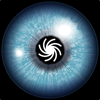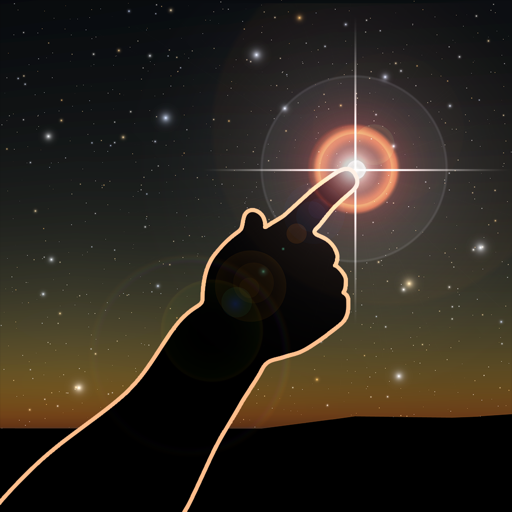$0.99

AstroAid
⭐️4.3 / 5
Rating
🙌44
Ratings
📼5 scs
Content
📦w/o updates
Updates frequency
🗣❌ unsupported
Your locale
- Versions
- Price History
- Description
- FAQ
All Versions of AstroAid
3.5.1
January 16, 2018
This app has been updated by Apple to display the Apple Watch app icon.
- minor bug fixes for iOS 10 users
More3.5
January 8, 2018
- Bug fixes and improvements.
- Added visual detection info for objects (and the ability to choose the best eyepiece directly).
- For field of view greater than 2 degrees, show constellation boundaries and figures where applicable.
- Better star designations on field of view.
- More object info, including extinction, apparent magnitude, sun and moon angular distance, air mass, parallactic angle, hour angle, heliocentric julian date, galactic & ecliptic coordinates, rise/transit/set times, etc.
More3.4.1
November 15, 2017
• Bug fixes
3.4
November 13, 2017
• Bug fixes, UI improvements and documentation update
• Setting available to show other found catalogue objects in the field of view, and the ability to press on them and show information.
• Chart page info available in object information view for 30+ common charts and atlases (selected via Settings). Shared via iCloud with all your devices.
• When downloadable updates are available, changes are listed (e.g. new catalogues and new hardware resources).
More3.3
October 30, 2017
• Assorted bug fixes and UI improvements.
• Size boundary of objects can be shown in field of view (option).
• Catalogues now sorted alphabetically by name.
• Star catalogue (2.5 million stars) included to provide background stars for fields of view > 1 degree.
• Binoculars.
• Swipe left on object entry to delete cached image (where applicable).
• Settings view now scrollable and include new field of view settings.
• Constellation mini-view in object/system data views.
• More data in hardware info views, showing data for pairing with other appropriate custom/owned hardware.
• (iPhone only) Field of view now has Hardware button to facilitate switching to custom hardware view.
More3.2
October 3, 2017
• Assorted bug fixes and improvements to the user experience.
• There’s now a separate “Custom Hardware” section showing all of your custom hardware, which can be re-ordered.
• You can convert a selected built-in resource into a custom resource by swiping left and choosing “Custom”.
• Moon image inverted for souther hemisphere users.
• Can now enter sensor size for custom imagers (and it will compute pixel size, and v.v.)
• Selecting an already selected optical aid twice will switch it off (and select “None”)
• You can now magnify indefinitely, rather than getting a nasty message.
• Object data now has extra moon-related stuff.
• Moon now shows phase visually.
More3.1
September 26, 2017
• Minor bug fixes and performance enhancements
• Sun, moon and planets now supported in a special solar system catalogue
• Documentation within the app now has illustrations
More3.0
September 19, 2017
• The application has been completely redesigned and rewritten for modern iOS versions.
• More objects (with associated images) and hardware resources are available, and will be updated on-line.
• The app takes into account the user's current location in order to provide current altitude & azimuth information.
• Custom & owned hardware resources are shared between multiple iOS devices via iCloud.
• Built-in documentation.
More2.0
September 5, 2012
- Various minor bug fixes
- Various improvements and changes to the GUI
- Can now select camera lenses as well as telescopes
- Can now select cameras/imagers as well as eyepieces
- Added NGC, IC and Caldwell catalogues
- Downloadable astro-images for all catalogue items
- Text search in catalogues
- Night vision mode
More1.0
July 13, 2012
Price History of AstroAid
Description of AstroAid
AstroAid is an app for amateur astronomers that functions as an aid to visualizing what you will see through your telescope/camera lens when you use a particular eyepiece and, optionally, an optical aid (such as a Barlow lens). You can also pair a camera/imager with a telescope and determine what your camera/imager will see in its frame. This will be a big help for astro-imagers.
The app computes a number of parameters for your telescope/eyepiece/imager combination, such as magnification, actual field of view, visual magnitude limit, etc. and displays these values in tabular form.
Several astronomical catalogues are built in to the app (including Messier, NGC, IC, and many other object catalogues), and will be updated on-line occasionally. Images for these objects can be downloaded. All catalogues can be searched.
The app contains extensive lists of known vendor-supplied telescopes, camera lenses, eyepieces, imagers, and optical aids. You can also create your own custom entries if your equipment isn't listed (for example, if you made your own telescope). These custom entries are shared between your devices via iCloud (if available).
Show less
AstroAid: FAQ
Yes, the AstroAid app is compatible with iPads.
iLanga, Inc. launched the AstroAid app.
To function properly, the app requires at least iOS 10.0.
AstroAid has an exceptional rating of 4.3 out of 5, which is a testament to its quality.
Education Is The Primary Genre Of The Astroaid App.
3.5.1 is the newest version of AstroAid.
AstroAid’s most recent update was on July 1, 2024.
The app first launched on February 5, 2023.
Safe for children to use, no mature themes or inappropriate content.
AstroAid currently features the following languages: American English.
No, AstroAid is not on Apple Arcade.
No, AstroAid does not integrate in-app purchases for users.
Unfortunately, AstroAid is not tailored for compatibility with Apple Vision Pro.
















